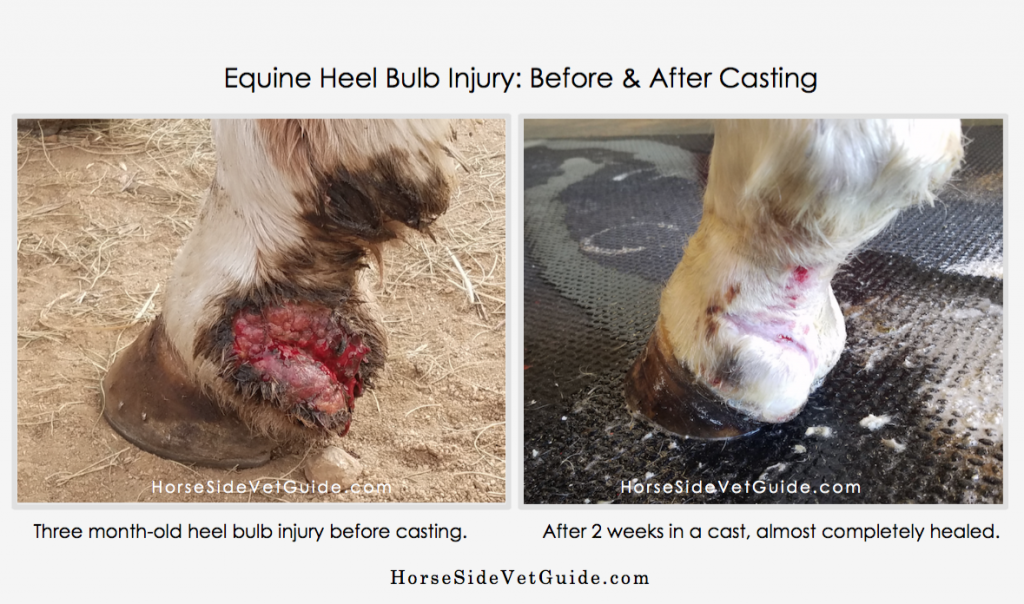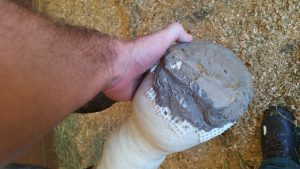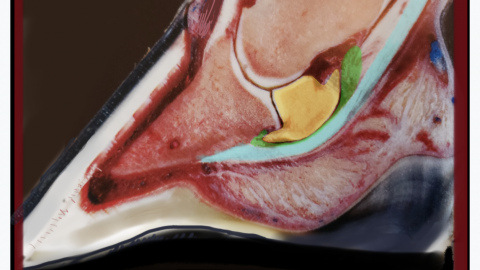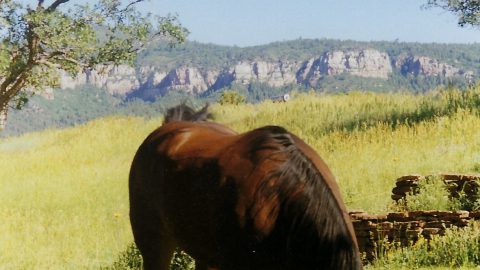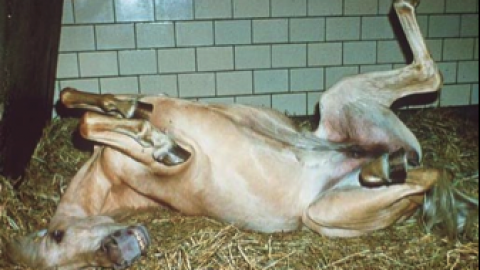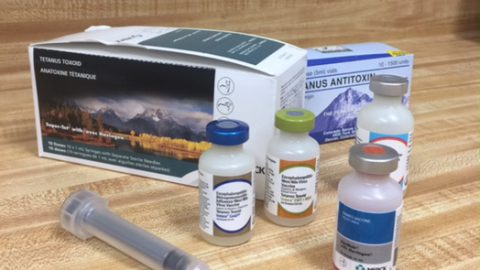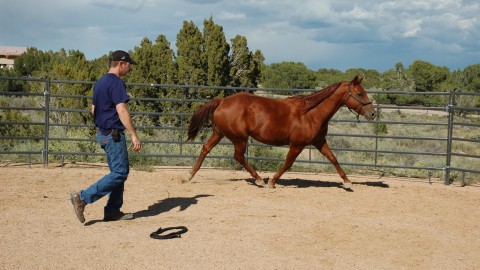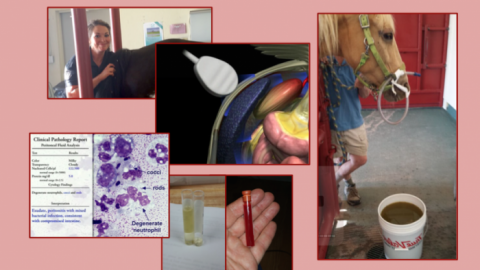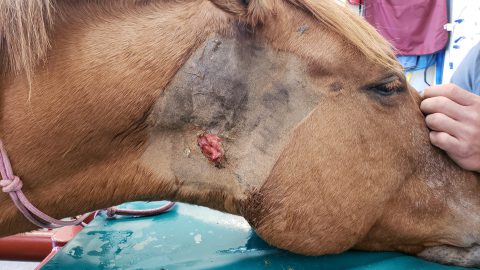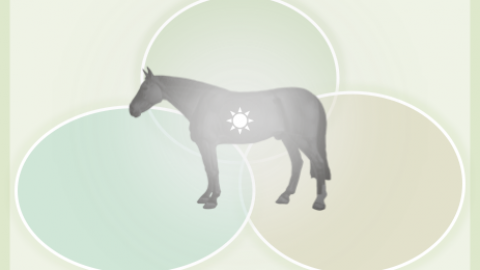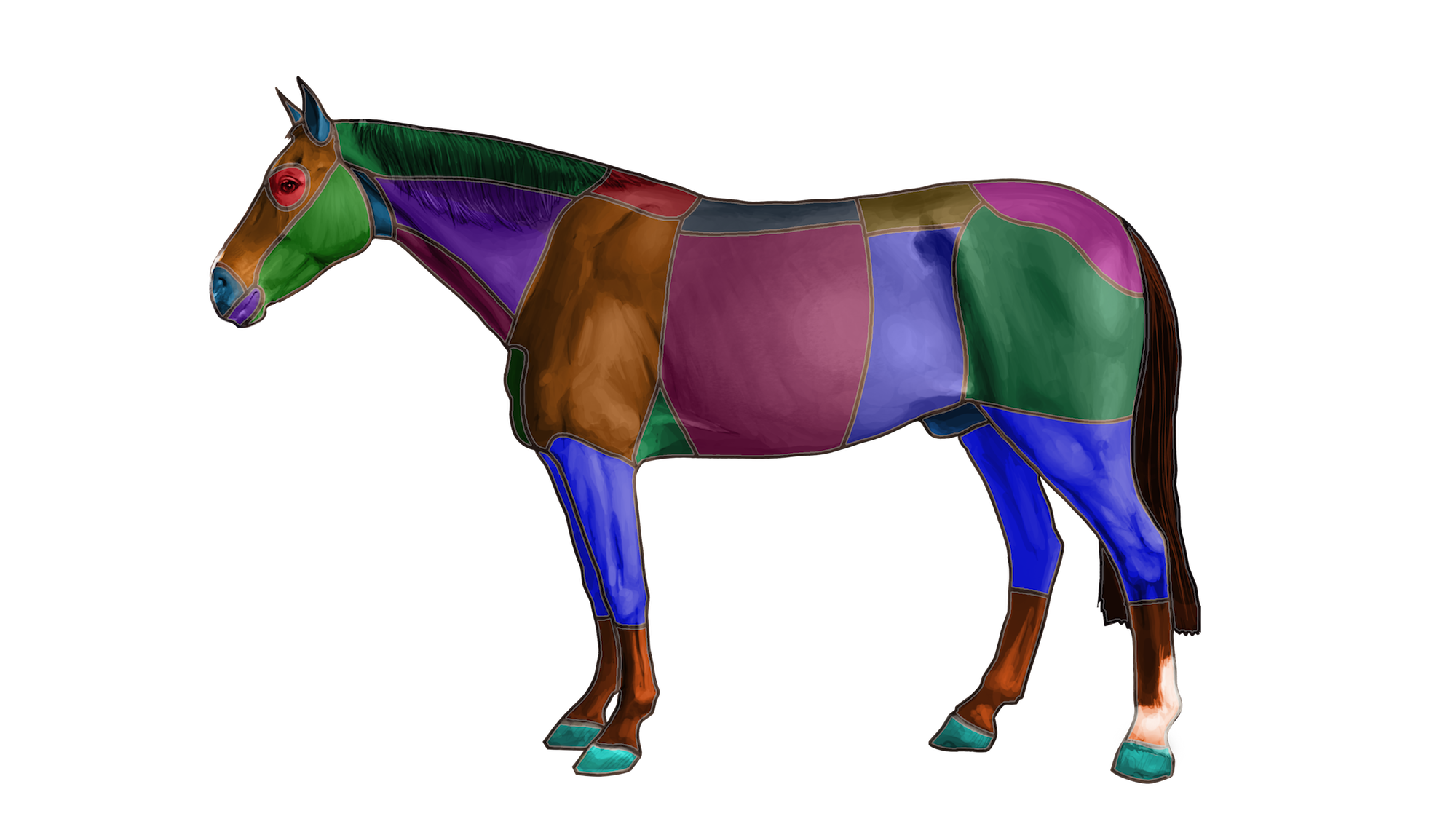Lower Limb Casts: A Remarkable Treatment For Severe Equine Lower Limb Wounds
Fancy, a 20 year old quarter horse sustained a severe heel bulb laceration. Her owners had tried a variety of topical wound ointments, but the wound actually became larger, and developed severe proud flesh.
We first saw Fancy 3 months after injury. We removed excessive proud flesh and kept the limb bandaged for 30 days. The wound improved, but stopped healing at a certain point. At that point, we put it in a cast for 2 weeks. See the results above.
Severe or complicated equine lower limb wounds can take a very long time to heal, and the results can be less than ideal. Fiberglass casting of the lower limb can be an extremely valuable tool for immobilization of the lower limb, allowing cosmetic and functional healing of complicated or non-healing lower limb wounds. Through complete immobilization, casts can promote remarkable healing in a very short time and may provide a much better cosmetic and functional outcome than treatment with bandaging alone.
Although, there are other uses for casts (some laminitis cases, specific lower limb fractures, some tendon and ligament injuries, and to help support and protect internal fracture repairs – screws and plates), the most common use in equine veterinary medicine is as a tool to promote wound healing in specific lower limb wounds.
-Casts are frequently used for severe pastern and heel bulb wounds. These wounds tend to be slow healing because of excessive movement and poor blood supply in the lower limb.
–Wounds involving the flexor tendons (critical weight bearing structures of the rear of the lower limb) require the use of a cast to protect the repair until sufficient scar formation has taken place to take the tremendous tension on these structures in weight bearing. See the images below.
Proper Application of a Cast is Tricky Business
Horses do not tolerate casts as well as other animals do. There is less room for error in terms of fit and positioning of the limb within the cast. The extreme forces generated by a moving horse requires exact fit and sufficient strength of a cast. Most types of casts incorporate the entire hoof in the cast. Proper placement of cast padding and felt, and precise and even tension of cast material (tightness of cast) is critical to successful outcomes for these cases.
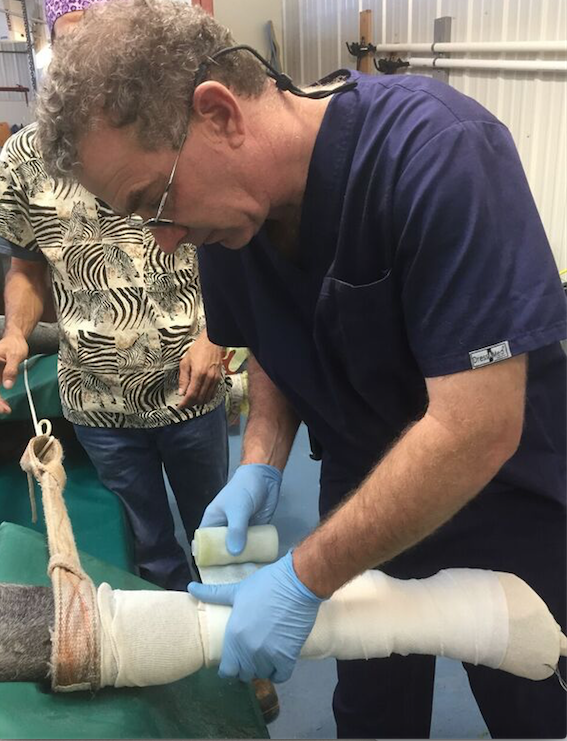
Applying Equine Foot Cast Under General Anesthesia
Your veterinarian may apply a cast to either an anesthetized or standing horse. One of the challenges of effective cast placement in horses is attaining the correct angle for weight bearing.
Horses tolerate casts much better when the angles are more normal. Preserving these normal angles tends to be easier in the standing horse, but the disadvantage of casting the standing horse is movement before the cast is fully hardened leading to poor cast fit and cast sores. That said, in our vet practice, we apply casts to standing patients whenever possible.
How It’s Done
After the wound is treated appropriately (i.e. cleaned, debrided, repaired) a dressing is placed over the wound. Stockinette and cast padding and orthopedic felt is placed, followed by cast material.
One of the hardest parts of casting a horse’s lower limb standing is minimizing movement of the limb until the cast has hardened. How quickly the cast sets depends on many factors but usually takes about 5 minutes. A tough acrylic sole plate is usually placed on equine casts, as horses moving around their stall rapidly wear through the fiberglass of the sole.
Standing cast application may require the horse to stand on a tiny block that elevates the hoof and allows cast tape to enclose the hoof. This is a tricky thing to do and can be frustrating, especially when dealing with uncooperative horses.
Lower limb wound healing often proceeds rapidly under a properly applied cast. Tremendous wound healing can take place in just a week or two. In most cases, casts are changed every 2-4 weeks.
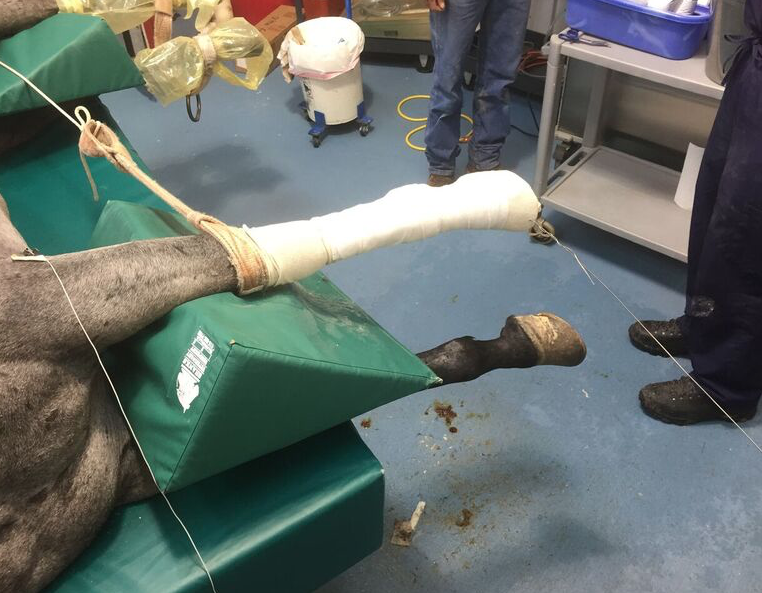
The hardest part of placing a cast under general anesthesia is configuring it to preserve normal and comfortable limb position when the horse is standing. Here, the wire attached to the toe of the hoof wall is pulling the toe into extension. The orange hobble pulls the upper limb backward.
Potential Side Effects & Complications
-
Cast sores are a real and potentially serious complication. Improperly applied casts rapidly result in severe discomfort and must be immediately removed.
-
A poorly constructed cast may break, causing rapid development of cast sores and failure to protect the injury.
Your Role- Care at Home After Placement of a Cast
-
It is very important to communicate regularly with your veterinarian while the cast is on. Heat, lameness or any other signs of discomfort should be promptly addressed. To learn more, read the Horse Owner Skill from Horse Side Vet Guide: How to Monitor a Horse with a Cast on a Limb.
-
Horses in a cast must be kept in a small, clean, dry, bedded 12×12 stall for the duration of casting.
Some Reasons Veterinarians May Not Recommend the Use of a Cast
-
Casts are often NOT the best alternative for immobilization of the limb for fracture healing. They do not give sufficient immobilization for this purpose. Internal fixation (screws and plates) is the standard of care for most equine fractures.
-
In most cases, casts must immobilize the joint ABOVE the area where immobilization is desired. Casts cannot be used for upper limb injuries.
-
Casts are usually not appropriate for enclosing septic (infected) joints or tendon sheaths. In most cases, those structures need to be accessed and treated frequently.
Questions To Ask Your Veterinarian About Casting
-
Will casting improve wound healing for this particular lower limb wound?
-
Is my horse a good candidate for this type of treatment?
-
What should I look for that would indicate complications?
-
How will I know if my horse is developing a cast sore?
Flexor Tendon Laceration Repair & Casting –
A Visual Timeline
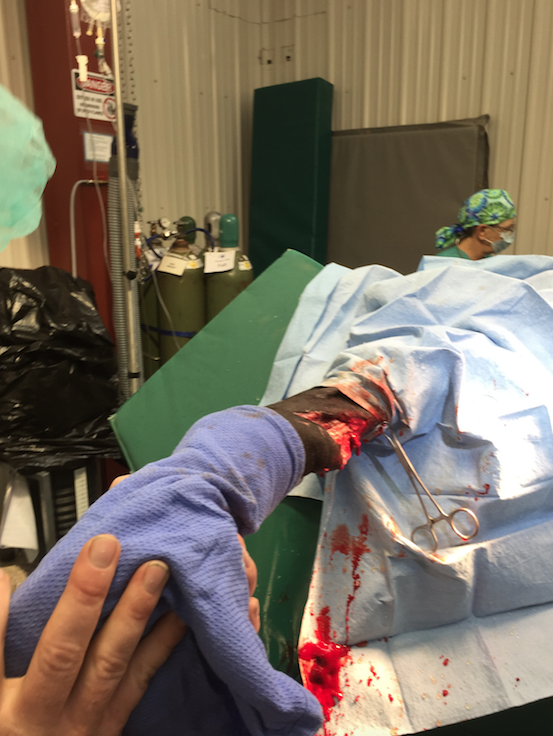
1. Severe Flexor Tendon Wound Prior to Repair. In this case, both superficial and deep digital flexor tendons were cut.
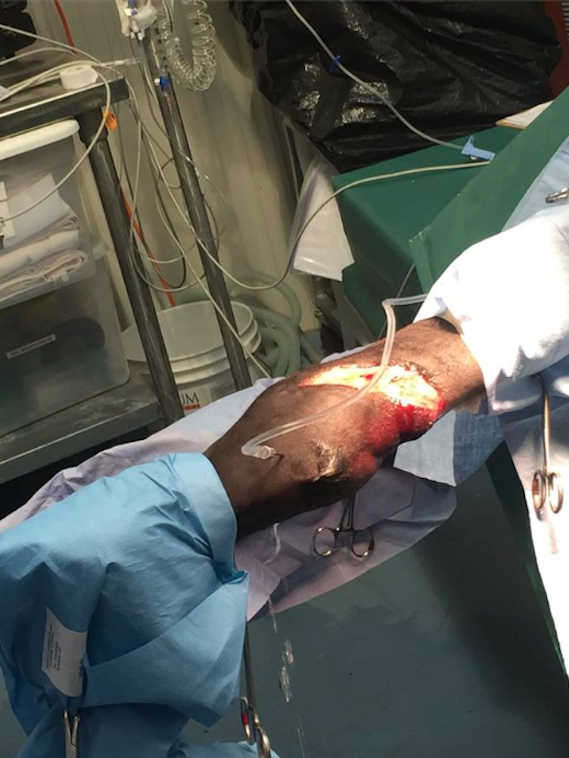
2. Needle flushing of the Flexor Tendon sheath as the wound is debrided and the tendons are repaired.
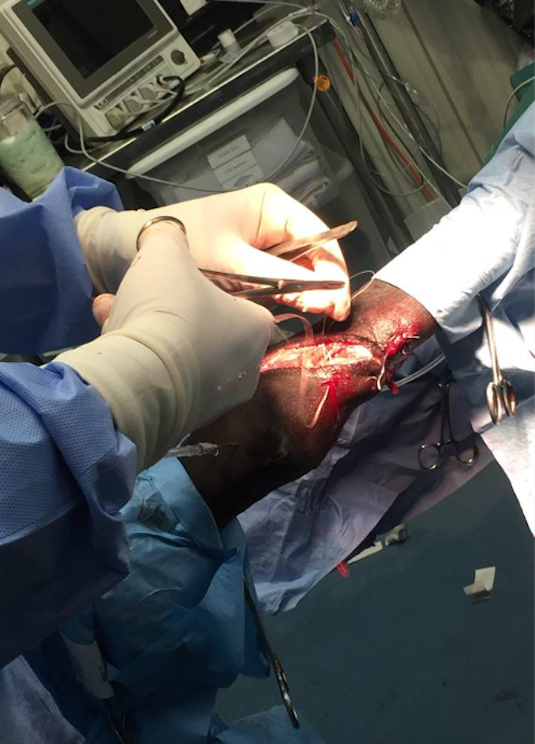
3. Suturing of Flexor Tendon and surrounding tissues.
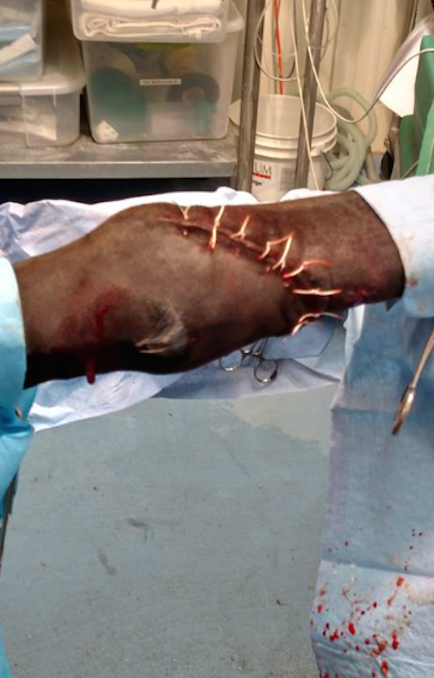
4. Flexor Tendon and skin has been sutured, and ready for dressing and cast placement.
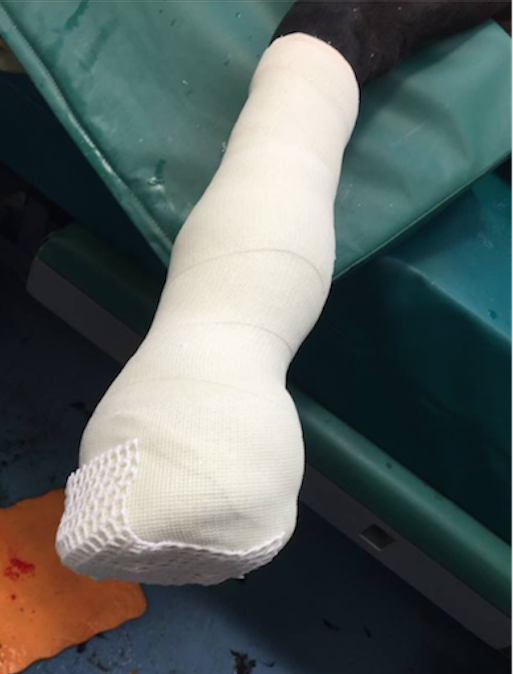
5. Casted Lower Limb
6. An example of an acrylic foot plate to prevent wear of the cast during walking.
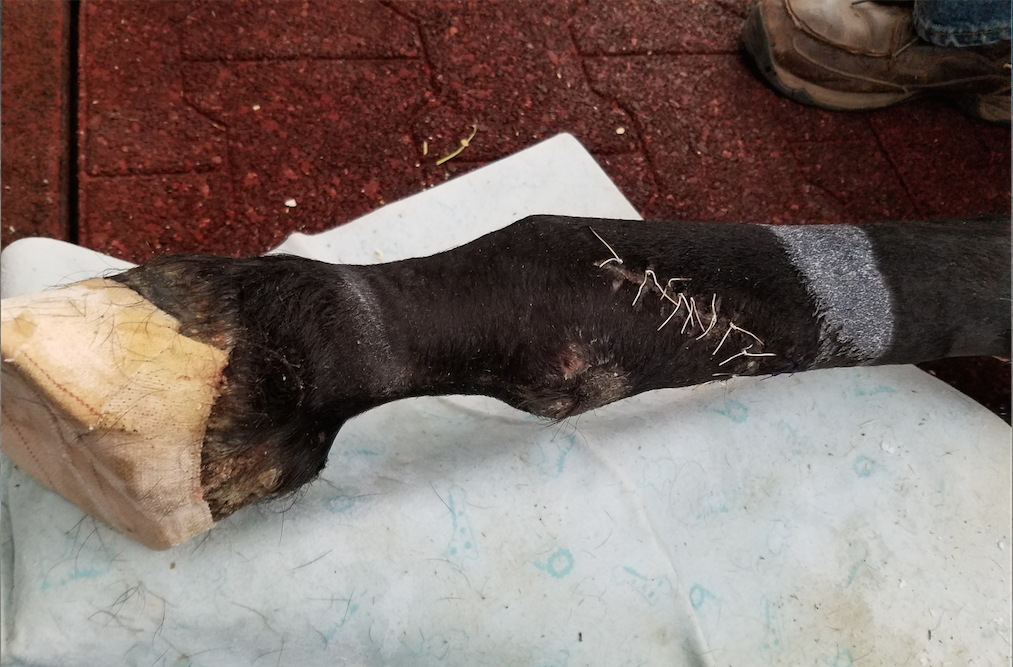
7. The same wound, healing well after 4 weeks in cast. One more cast was placed to allow sufficient time for the flexor tendon scar to gain strength. Note a small cast sore developing at the rear of the fetlock. This TB filly went on to be sound and may even race.
For a detailed description of this diagnosis see Wound or Laceration involving Lower Limb Flexor Tendon.


